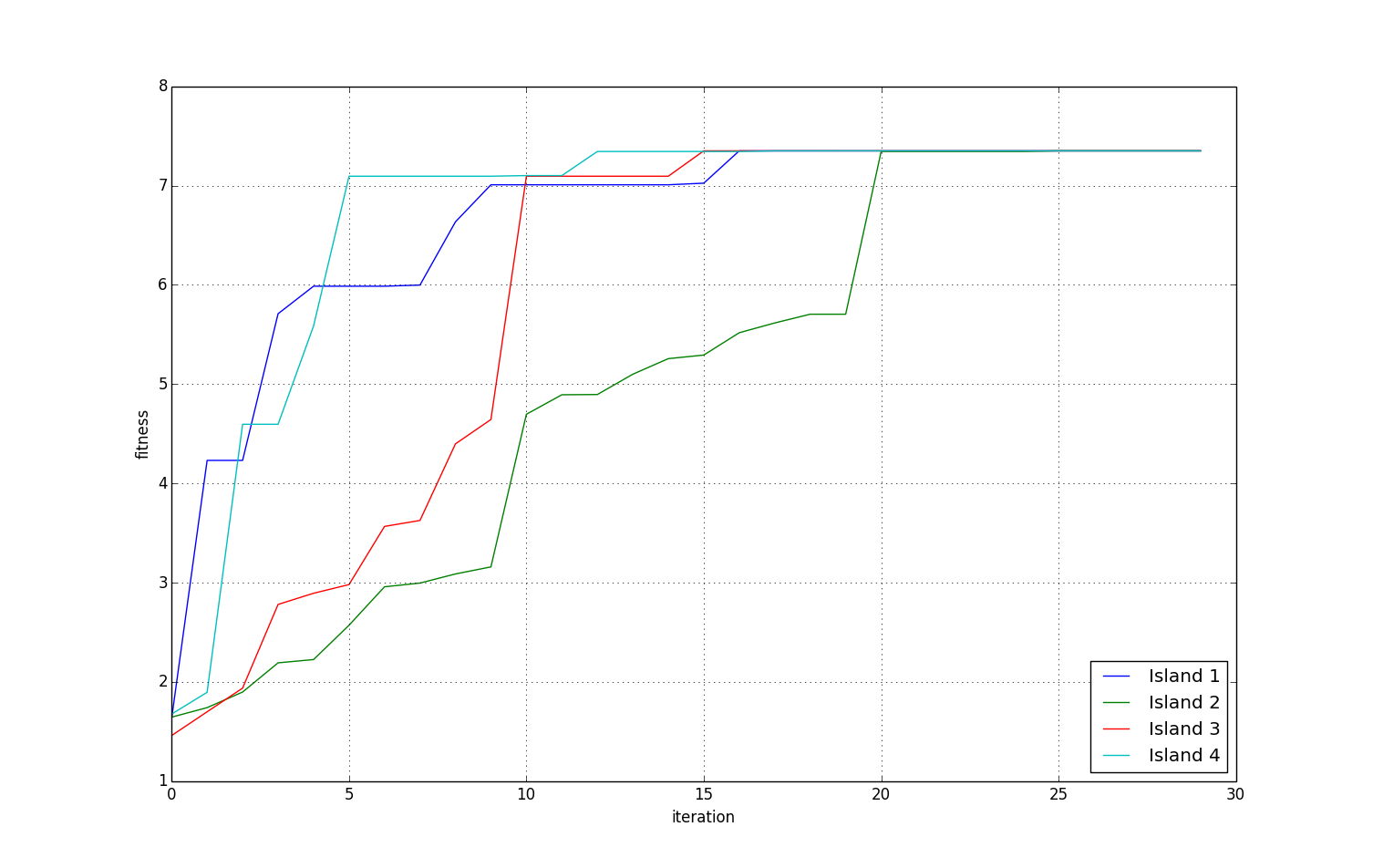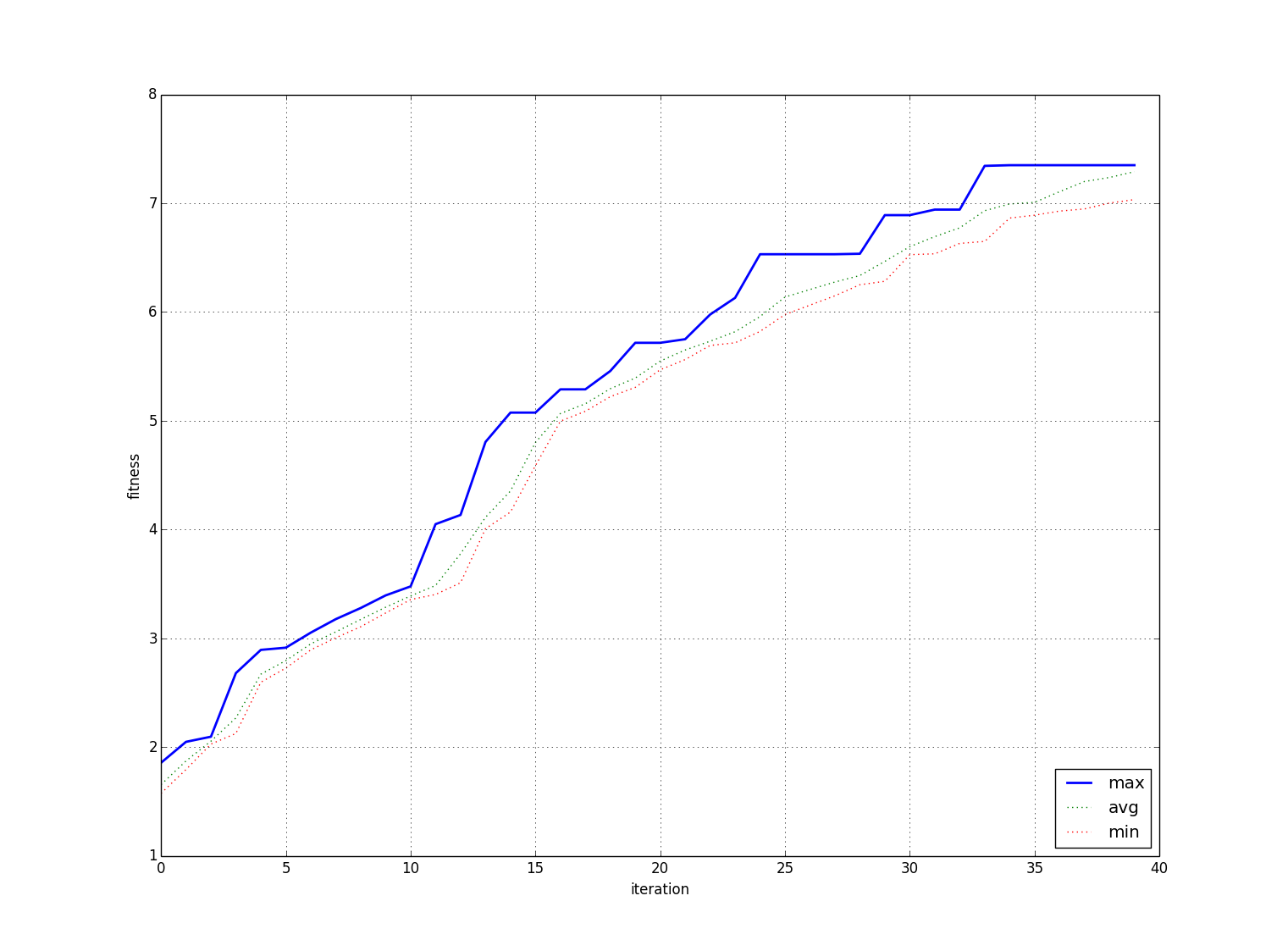What’s new in v0.2¶
Apart from some bug fixes and improvements, version 0.2 of pycrypt came with some new features. Let’s break them down:
The island model¶
The biggest improvement in pycrypt is that it’s now multi-threaded. It can now eat up all your processing power and is about 4 (or equivalent to your number of cores) times faster.
The new ThreadedGeneticSolver has the same interface as GeneticSolver, but runs as many instances of GeneticSolver as you have cores (you can change that with the num_processes argument). They don’t just run separated though, every 10 iterations (set by migration_iterations) the “islands” exchange their best individuals in a cyclic pattern.

This strategy makes it a lot better, mainly because the evolution doesn’t get stuck in local maxima as much now. If we look at a plot of an evolution with ThreadedGeneticSolver:

Even though island 2 got behind, the other islands helped it get back up to speed on iteration 20 (migrations occur on every tenth iteration).
Warning
The interactive interruption of ThreadedGeneticSolver doesn’t work so well. On different OSes happen different problems, the safest bet is just to set the iteration max and wait for the evolution to actually finish.
This brings us to another feature:
Evolution plotting¶
Both ThreadedGeneticSolver and GeneticSolver now support the plotLog method, you just need to enable logging with log=True. Let’s take a look at GeneticSolver plot:

This proved to be very helpful during development, as it revealed some quirks the algorithms had.
Crossovers¶
Initially, pycrypt didn’t include crossovers in its genetic algorithms. That was because permutations (which are used as keys for substitution ciphers) aren’t easily crossed over. Inspired by the algorithm described here (the order crossover 1), along with some standard algorithms as 1 and 2 point crossovers and tournament selection, they are now implemented.
I think that this added some not insignificant boost, but it’s not easily measured.
Temperature scaling¶
Another experimental feature, which is based on cooling down the mutations as the fitness gets better. It works a bit different in pycrypt - with high temperature, the most frequent letters like ‘E’, ‘T’ and ‘A’ get switched. As the evolution progresses, less frequent letters get switched, so that the finishing touches on the solution are made.
This approach didn’t prove very useful though, so I turned it off by default. I think it is because he biggest problems are local maxima and they don’t necessarily have the infrequent letters wrong, so the evolution gets stuck even more.
Cached scoring¶
The scoring is the performance bottleneck of pycrypt. All scoring is now cached, so if you score an individual twice, the score gets computed only once. This is managed by the cache decorator in the utils module and it can be applied to any function or method you want.
Easier installation¶
Pycrypt is now structured as a legit python package with requirements done finally right, so you can install it quickly with:
$ pip install "git+https://github.com/PrehistoricTeam/pycrypt.git@master#egg=pycrypt"
I might even consider getting pycrypt on PyPI in the near future.